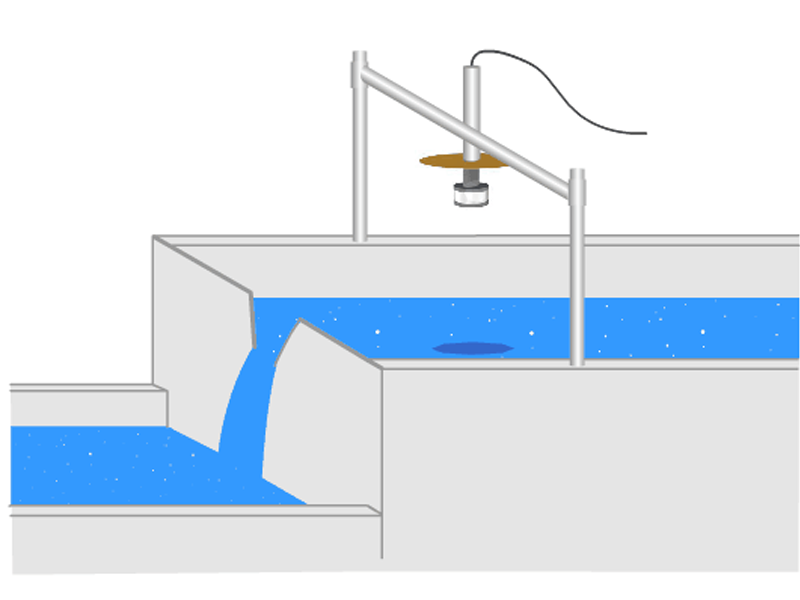
Ultrasonic open channel flow meters are used to measure the flow of water or other liquids in open channels, such as rivers, streams, or wastewater treatment channels. They operate based on the principles of ultrasonics and are typically designed for non-invasive measurements.
1. Ultrasonic Transducers
- Emitter and Receiver: The meter has two main components: an ultrasonic transmitter (or emitter) and an ultrasonic receiver. These transducers are often mounted on the side of the channel or on a fixed structure above the channel.
- Emission of Waves: The transmitter emits high-frequency ultrasonic sound waves into the channel.
2. Echo Measurement
- Travel and Reflection: The ultrasonic waves travel through the air and are reflected by the surface of the liquid or the channel bed. In some designs, the waves might also reflect off other objects in the channel.
- Time-of-Flight: The receiver captures the reflected waves. By measuring the time it takes for the ultrasonic waves to travel from the emitter to the receiver and back (known as the time-of-flight), the meter determines the distance to the liquid surface or channel bed.
3. Depth Calculation
- Distance Measurement: The time-of-flight is converted into a distance measurement using the speed of sound in air (which is a known constant). This distance represents the depth of the liquid from the sensor to the liquid surface.
- Depth Determination: In some configurations, the meter might measure the distance to the bottom of the channel instead and then subtract this value from the total channel height to determine the liquid depth.
4. Flow Rate Calculation
- Flow Profile: The depth of the liquid is then used to determine the flow profile of the channel. Open channel flow meters often use standard flow equations that account for the channel’s shape (e.g., trapezoidal, rectangular) and the flow conditions.
- Hydraulic Equations: The flow rate is calculated based on hydraulic principles, such as the Manning equation or the Chezy equation, which relate the depth and channel characteristics to the flow rate.
5. Output and Display
- Data Processing: The meter processes the raw data, converts it into meaningful flow measurements, and displays it in terms of flow rate (e.g., cubic meters per second) or volume over time.
- Reporting: Many ultrasonic flow meters offer features like data logging, real-time monitoring, and integration with control systems for automated operations.
Key Advantages
- Non-Invasive: The meter does not come into contact with the liquid, reducing maintenance and wear.
- Accurate: Provides accurate measurements for a wide range of flow conditions.
- Versatile: Suitable for various channel shapes and flow rates.
Overall, ultrasonic open channel flow meters offer a reliable and efficient method for measuring and monitoring flow in open channels with minimal interference or maintenance.
